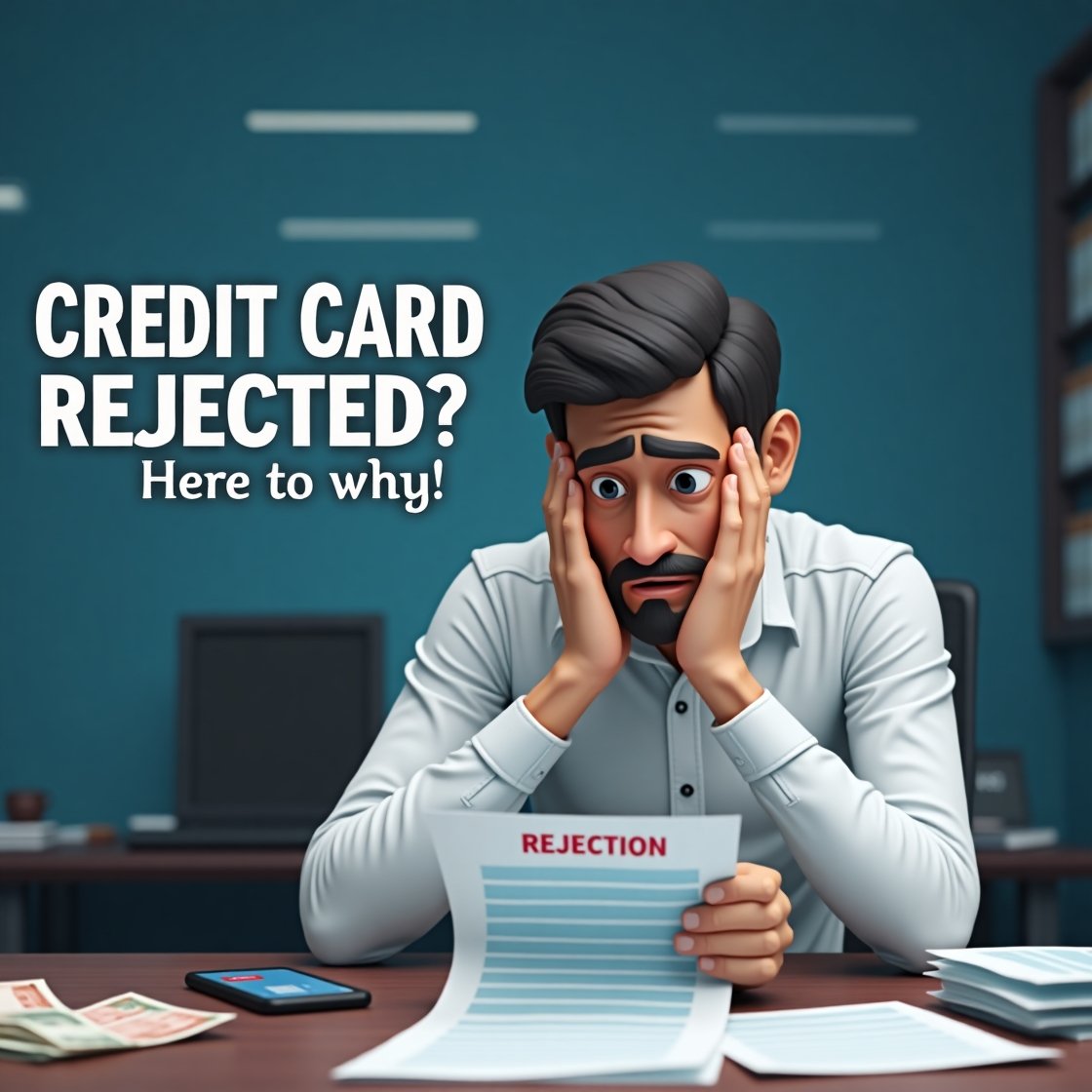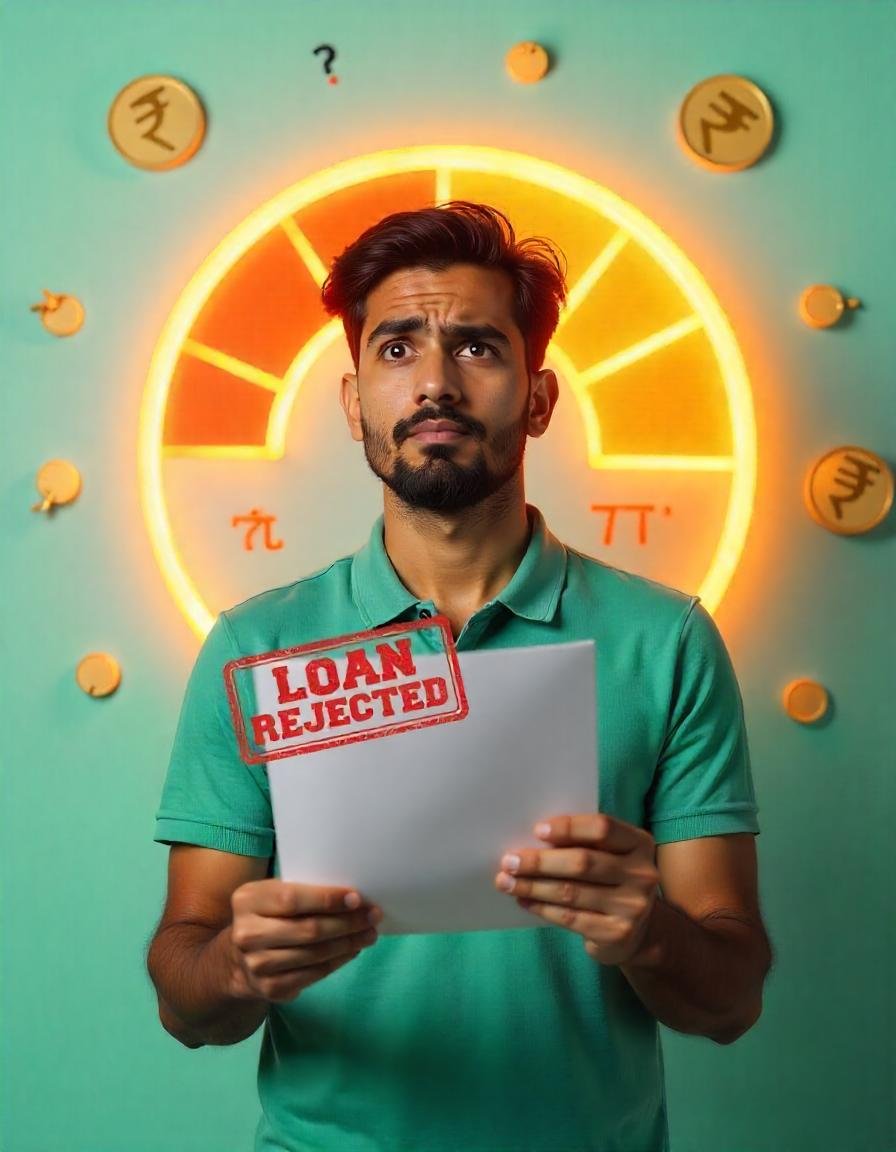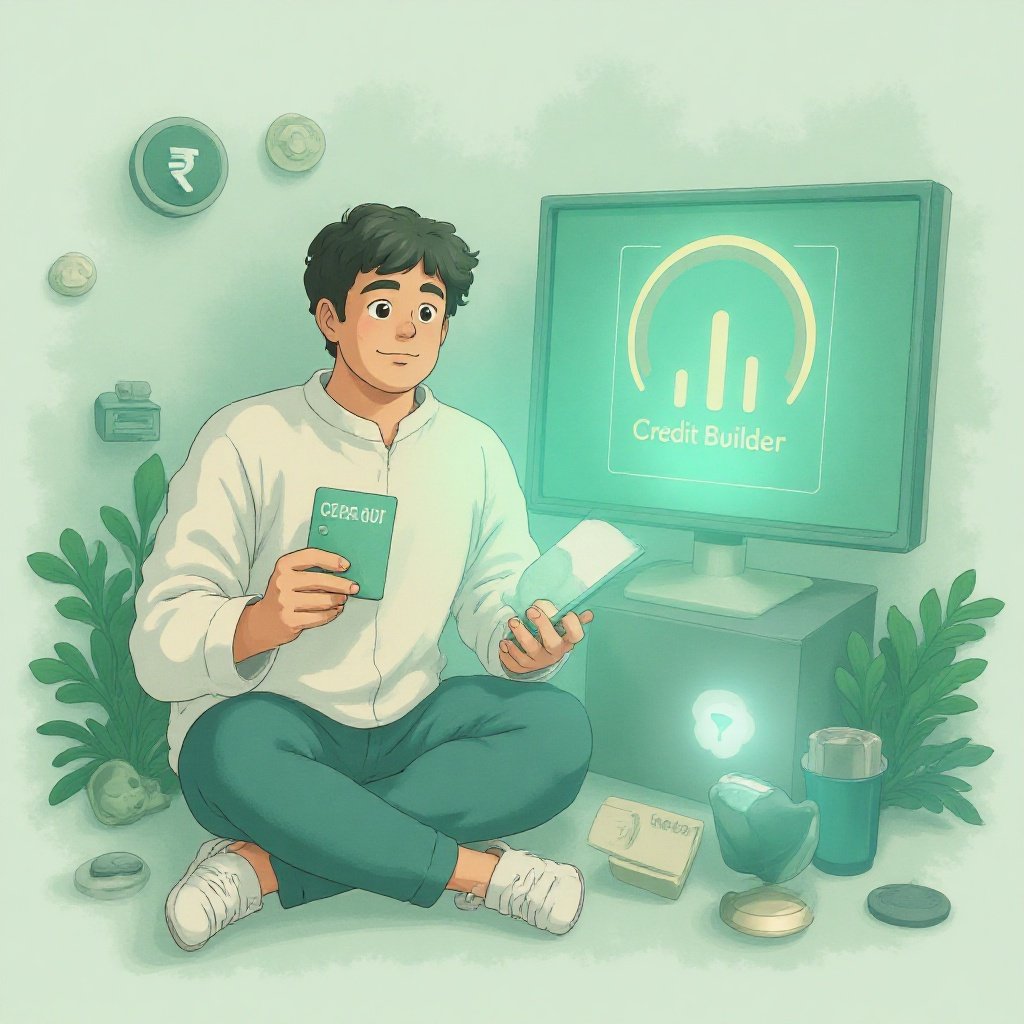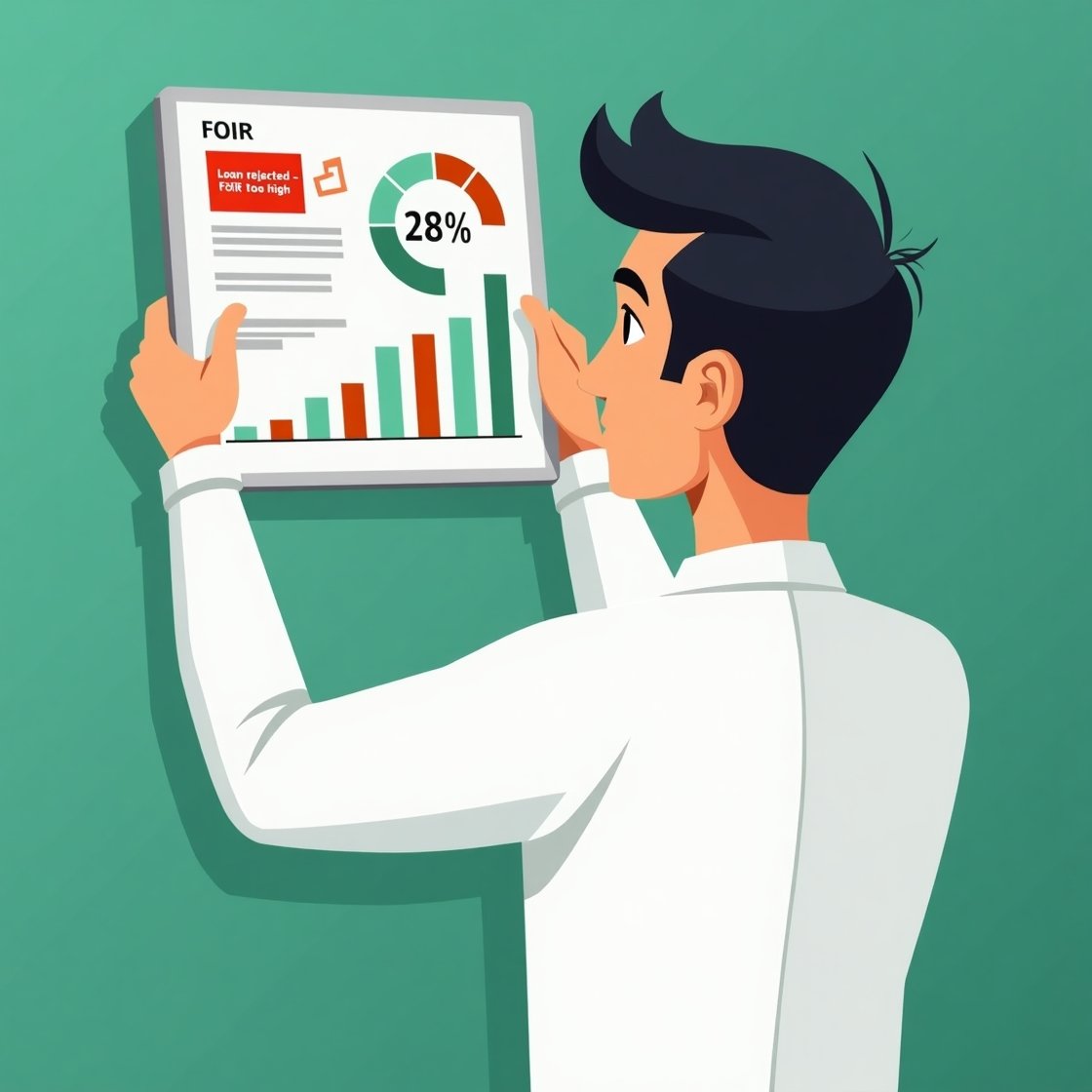Why Was My Credit Card Application Rejected in India (2025)? Here’s the Truth Banks Won’t Tell You
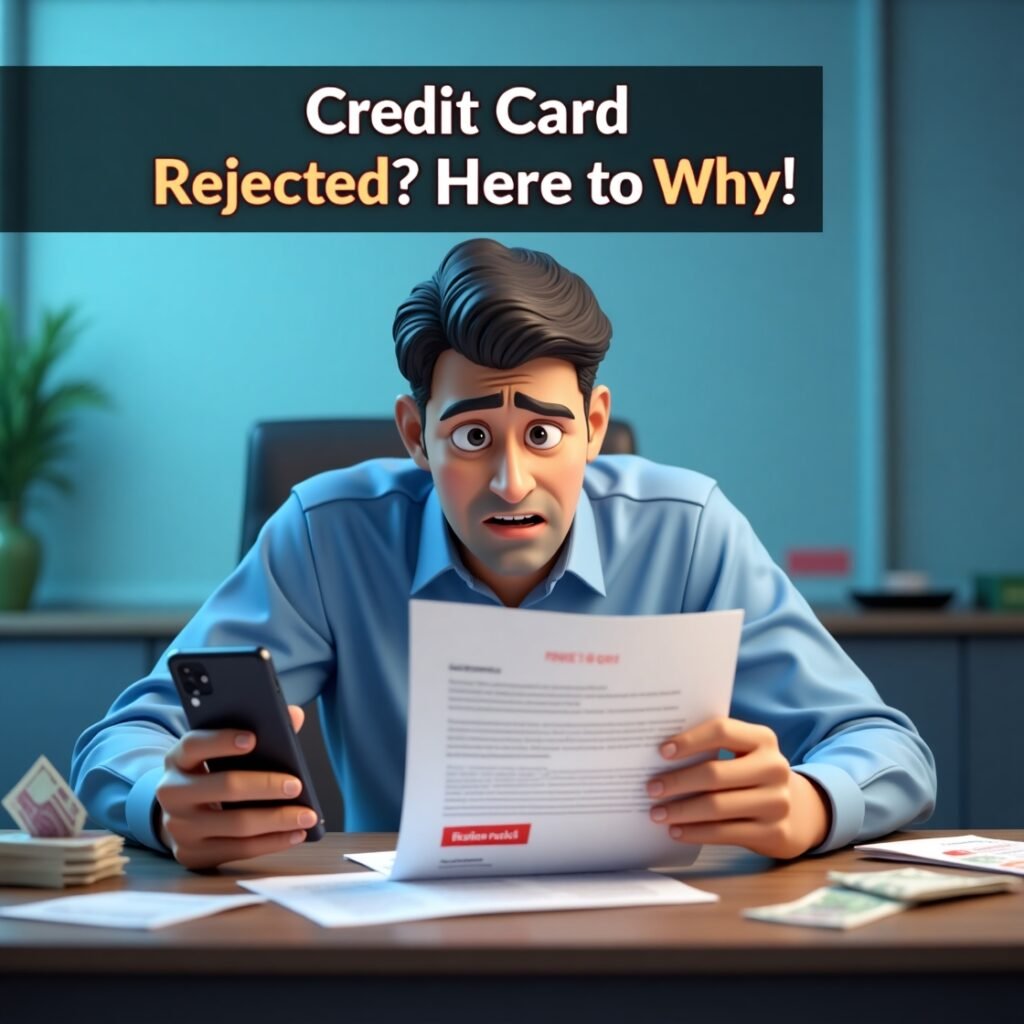
You’ve got a stable income. Your CIBIL score is above 750. You’ve never missed an EMI.
So why was your credit card application still rejected?
You’re not alone. In 2025, banks in India have drastically tightened their credit card approval process using AI-based fraud filters, internal risk engines, and geographic risk scoring models.
While public ads promise “easy approval in 3 minutes,” the reality is far more complex.
This guide reveals the real reasons why credit card applications get rejected in India — even when everything seems fine on paper.
🧠 Common Misconception: “Good Credit Score Means Guaranteed Approval”
A high credit score (CIBIL/Experian) does improve your chances, but it’s not the only factor.
Banks now evaluate dozens of hidden parameters — many of which are not publicly disclosed.
Here’s how you might fail, despite a great profile.
📉 Top 10 Real Reasons Why Your Credit Card Was Rejected in India (2025)
1. 💼 Insufficient Income for the Card You Applied For
Every credit card has a minimum income requirement based on its benefits and risk level.
| Card Type | Required Monthly Income |
|---|---|
| Entry-level (e.g., SimplySAVE) | ₹15,000–₹25,000 |
| Mid-tier Rewards Card | ₹35,000–₹60,000 |
| Premium/Lifestyle Card | ₹75,000+ or ITR-based |
Even if your income is stable, if it doesn’t meet the card-specific threshold, auto-rejection happens.
2. 📊 High Credit Utilization on Your Current Credit Cards
If you are using more than 50% of your existing credit limit, banks view you as financially stretched.
✅ Try to keep utilization below 30% to appear stable and credit-responsible.
3. 🧾 Too Many Recent Credit Applications
Have you applied for 2+ loans, cards, or BNPL services in the last 3 months?
Your credit report shows this activity as “credit hungry behavior” — a red flag for most banks.
✅ Space out applications and avoid too many hard inquiries at once.
4. 📉 Poor Credit Mix or Thin Credit Profile
Credit mix means having both secured and unsecured loans. If your report only has:
- Credit cards
- Personal loans
…it appears unbalanced. Banks prefer applicants with diversified credit types (home loan, auto loan, card, etc.).
Also, if you’re new to credit (no loans/cards), you have a “thin file” — banks hesitate to take the first risk.
5. 🔴 Settlement, Write-Off, or Delinquency History
Even if your score is now high, past issues such as:
- Loan write-offs
- Settled accounts
- Long-overdue EMIs
can cause rejection. Banks maintain internal blacklist flags for 3–7 years.
6. 🆔 KYC or PAN Mismatch
- Spelling mistakes in Aadhaar/PAN
- Mismatched DOB across documents
- Multiple PAN entries in credit report
These result in auto-verification failure and instant rejection.
✅ Double-check your documents and credit report before applying.
7. 🔄 Recently Closed Credit Card
If you closed an old card recently, it reduces your average credit age and increases credit utilization.
Applying for a new card immediately after closing one can be seen as suspicious behavior.
8. 🏢 Blacklisted Employer or Unstable Industry
Even with a good salary, you may face rejection if you work for:
- Unregistered startups
- Gig economy platforms (freelance/informal)
- High-risk sectors (crypto, betting, cash-based businesses)
Banks use employer databases to evaluate risk.
9. 📍 Address-Based Risk Scoring
Lenders use fraud-data heatmaps and postal code analysis to judge geographic risk.
If your pincode has a high default or fraud rate, your application may be declined — even with perfect credit.
✅ Use permanent address if your current location has a bad credit reputation.
10. ⚖️ FOIR (Fixed Obligations to Income Ratio) Is Too High
If your current EMI + card dues cross 40–50% of your monthly income, banks feel you’re at capacity.
They calculate FOIR before every credit approval.
✅ Reduce EMIs or close smaller loans before applying.
💡 What Should You Do After Getting Rejected?
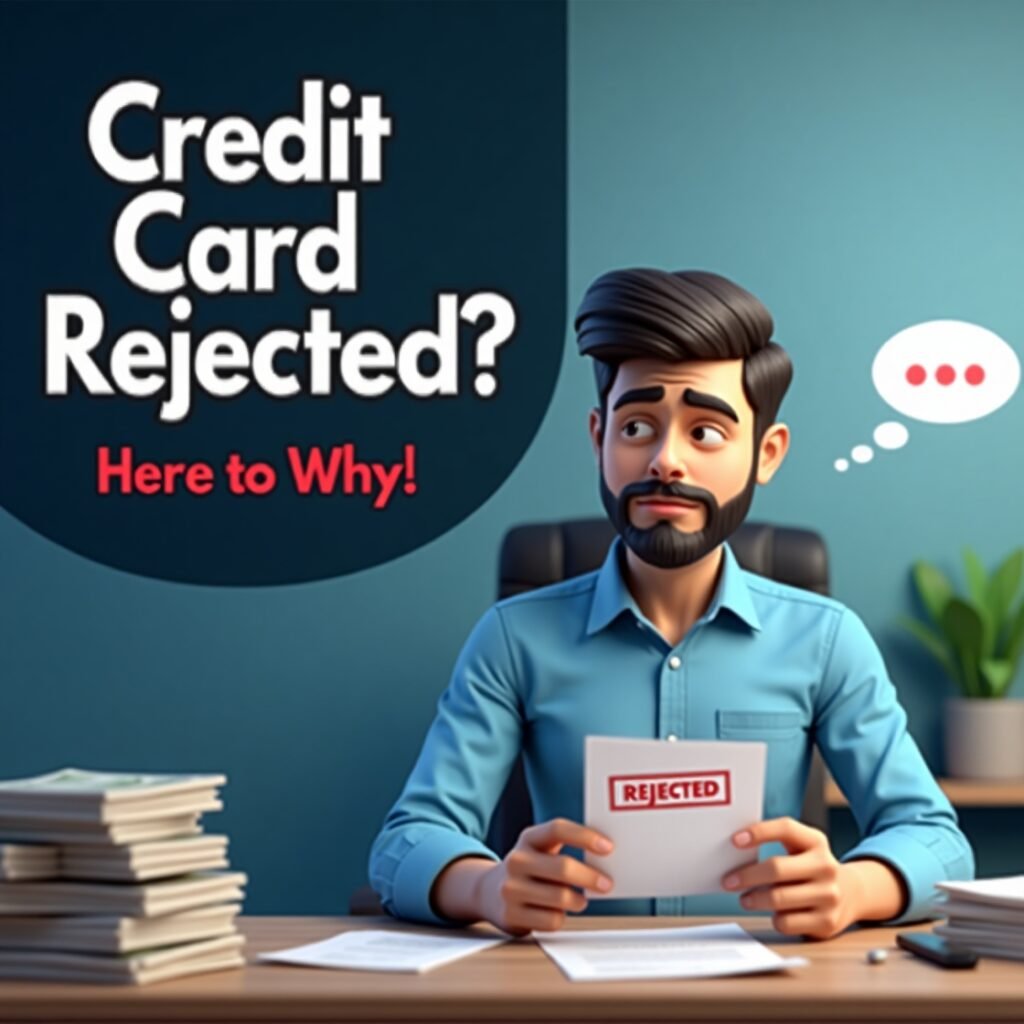
✅ 1. Don’t Reapply Immediately
Wait 45–60 days. Each new application causes a hard inquiry, further reducing approval chances.
✅ 2. Check Your Credit Report in Detail
Look for:
- Past unpaid accounts
- Incorrect ownership (fraud)
- Accounts not marked “closed”
- Recent hard inquiries
Use free tools like OneScore, Paytm, or Experian India.
✅ 3. Add a Secured Loan or FD-Backed Credit Card
These prove repayment responsibility and diversify your profile.
Try:
- SBI Unnati Credit Card
- ICICI FD Card
- AU Small Finance Builder Card
✅ 4. Lower Your Utilization and FOIR
- Pay down credit card balances
- Avoid taking new EMIs for 3 months
- Don’t apply for BNPL services temporarily
📈 How to Avoid Future Credit Card Rejections
| Strategy | Why It Helps |
|---|---|
| Maintain < 30% utilization | Shows healthy money management |
| Keep old cards open | Builds trust via credit age |
| Use credit builder cards | Strengthens score over time |
| Pay all bills on time | Most important scoring factor |
| Monitor reports monthly | Catch fraud and issues early |
❌ Don’t Fall for These Credit Card Myths
- “I have a salary slip, so I’ll be approved.”
➤ Not always. Banks look beyond salary. - “I have only one loan, so my profile is clean.”
➤ Thin credit profiles are often rejected. - “I’ll apply to 3 banks and one will approve.”
➤ This actually lowers your chance with all.
🔁 Related Articles
✅ How to Improve Your Credit Score in India Step-by-Step Guide
✅ Best Zero Annual Fee Credit Cards in India (2025 Update)
✅ Top Credit Builder Cards in India for 2025
🧾 Final Thoughts: Rejections Are Temporary – Fix the Root Cause
Being rejected for a credit card doesn’t mean you’re not financially responsible — it just means your profile doesn’t match the current risk filters used by banks in India.
With just a few smart steps:
- 📊 Monitor your report
- 📉 Reduce FOIR and utilization
- 📋 Add secured credit
- ✅ Fix KYC mismatches
…you’ll build a profile that banks can’t say no to.
